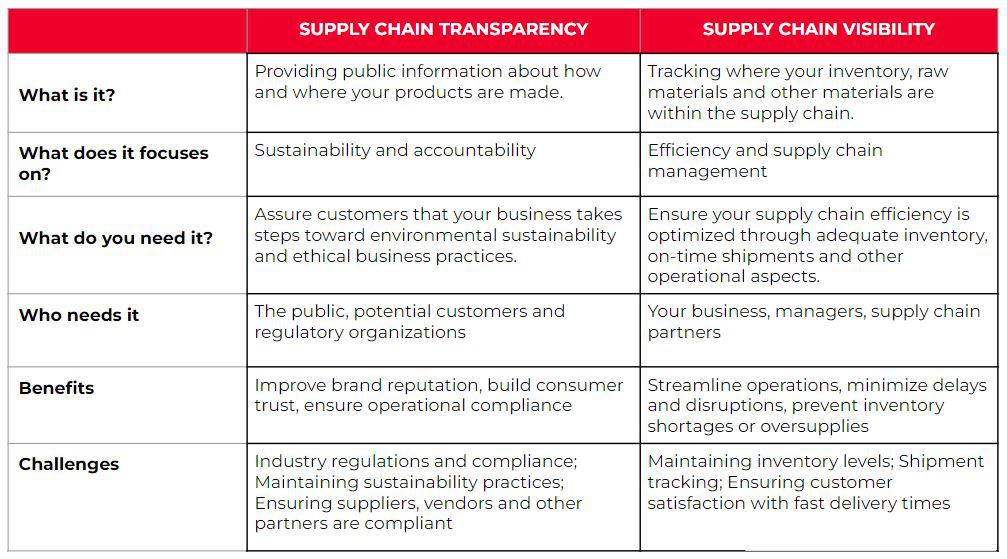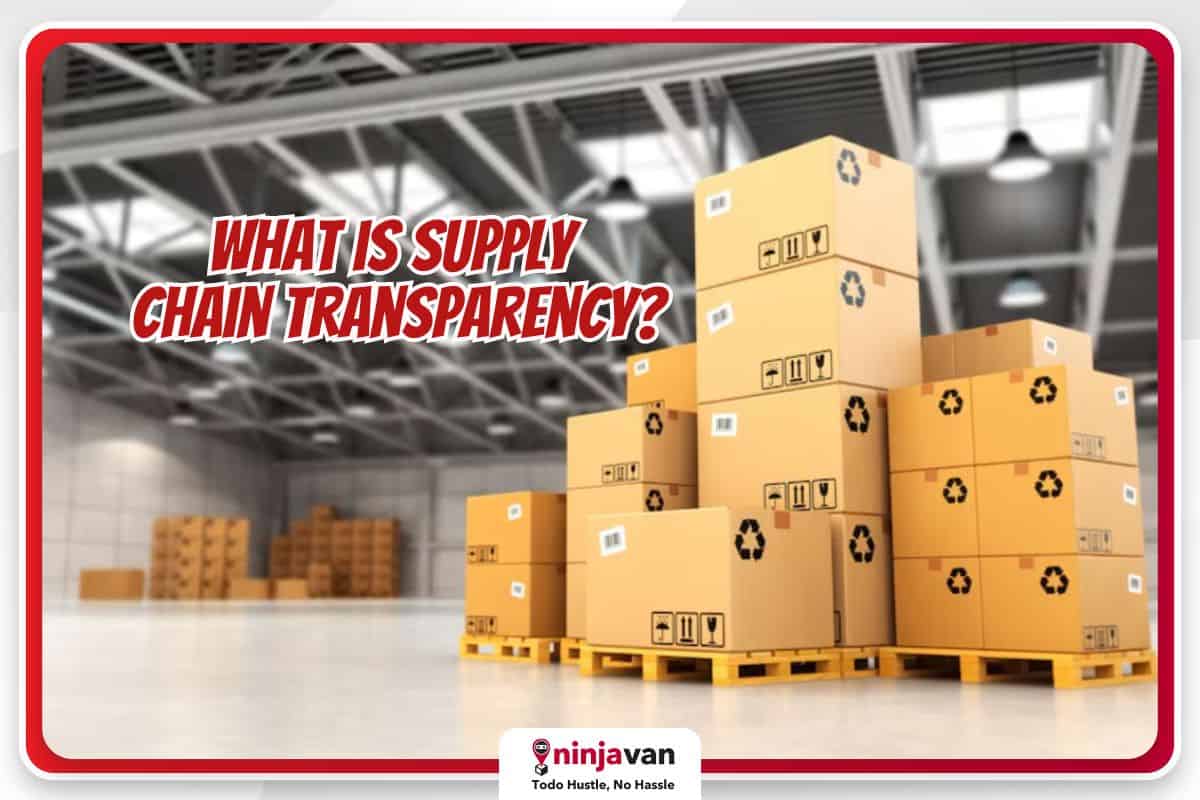Shoppers today want to know where and how a company makes their products before buying. It’s why some people only buy products labeled as “cruelty-free,” “eco-friendly” or “locally made.”
But these labels are not just a marketing approach; these labels tell your consumers that your business is not just about revenues. Through supply chain transparency, you’re letting the market know you’re also a force for good.
What is supply chain transparency?
Supply chain transparency is about letting the public know where and how your products are made. With a transparent supply chain, people learn details about your operations, such as:
- Where you sourced your raw materials or your inventory
- The brand of parts and other items you’ve used to make your product
- The workers who made your products and whether they’re paid fair wages and work in good conditions
- Your efforts for sustainable or eco-friendly operations
Supply chain transparency vs. supply chain visibility
Supply chain transparency and supply chain visibility are related concepts, but they focus on different aspects of the supply chain.
Supply chain transparency is openly accessible to the public and offers information about processes, sources and practices. It promotes trust and accountability for a brand, and shows how their products move from source to consumer – at every stage of the supply chain.
Supply chain visibility, on the other hand, is about keeping an eye on where your products or raw materials are as they move through the supply chain. It’s less about fostering trust and accountability among your customers and stakeholders, and more about ensuring operational efficiency as you keep track of the logistics process flow and where raw materials, products and orders are at any point.

8 Benefits from having supply chain transparency
Different industries have different regulations about which parts of your supply chain should be accessible to the public. Some businesses may be hesitant to share more than what’s legally required because competitors will know about it.
But transparency with your supply chain has a positive impact for your brand, revenue and operations.
1. Build trust with your stakeholders
Transparency builds trust, which promotes customer loyalty. But this trust also extends to stakeholders.
Suppliers are more likely to engage in long-term partnerships because of your commitment to , for example, fair mutual trade. Investors can also assess your company’s performance and conduct risk management, allowing them to decide whether to continue investing in your business.
2. Improve sustainability
With supply chain transparency, you know where your raw materials and inventory comes from, how it’s made and if it comes from sustainable sources that match your brand. The information helps your business identify and address environmental and social impacts, allowing you to make “greener choices.” Transparency can promote your sustainable values, which can attract eco-conscious shoppers.

3. Supply chain resilience and risk management
Supply chain transparency allows you to examine risk areas in your supply chain. The risks can include disruptions, quality issues and compliance failures. From there, you can create alternative strategies and back-up plans in case your supply chain faces challenges.
4. Enhance brand loyalty
Supply chain transparency can improve brand loyalty by creating a deeper connection with customers. Many conscious shoppers want to know how products are made before they buy. If they can relate to your brand’s values and the steps you take for transparency, they’re more likely to make repeat purchases.
5. Foster supplier relationships
Being transparent about your supply chain can foster better relationships with your vendors, suppliers and other sources. By making your supply chain available, they can see that you’re using their business to create sustainable and ethical operations. This can lead to stronger relationships and better performance across the supply chain.
6. Increase customer satisfaction
Transparency builds trust and shows values that can resonate with consumers, leading to happier customers buying your products.

7. Boost revenue
Although transparency can get you additional customers, the true revenue boost lies in better customer retention. It costs more money to attract new customers than to maintain a loyal customer base. Supply chain transparency can boost brand loyalty, leading to better customer retention and increasing profits up to 95%.
8. Impact your industry
If you manage to create a sustainable supply chain and deliver quality products, your business becomes proof that your industry can operate competitively while maintaining your integrity and responsibility toward the environment. This could be a catalyst for change that convinces other businesses to adapt sustainable practices.
Key Takeaway
Supply chain transparency is a growing strategy among businesses that want to create sustainable and ethical brands. Although it can attract and retain customers, transparency delivers positive results beyond the bottom line.
So it’s worth sharing information, and using that information to improve every aspect of your business.
More tips for better supply chain flow:
How Less-Than-Truckload Shipping Benefits Your Business
Common Inventory Management Problems and Solutions
A Fast Solution to Improve Your Stock Inventory







